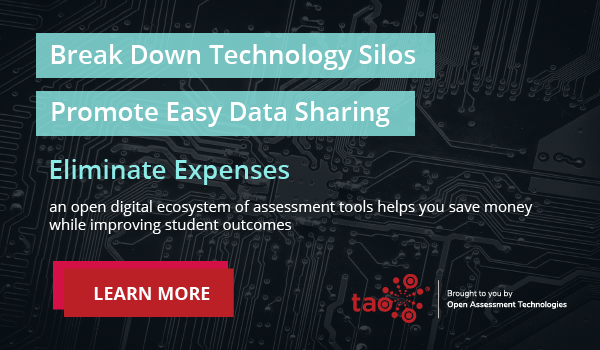Modern K-12 classrooms operate as much online as they do in brick-and-mortar. Over the last two decades, the application of new technology has been leading this digital shift, and the impact has been quite clear. Although not without roadblocks and pressure, EdTech has transformed both the methodology and philosophy that drive modern education.
Testing approaches have perhaps been the quickest to adapt to digitization. For example, online testing tools have allowed for testing that goes far beyond old-school accountability. The new type of technology-powered assessment integrates more meaningful metrics, like students’ college and career readiness. Testing of low-level knowledge and skills is now on par with personalized feedback and integration of skill-appropriate instruction.
Currently, a nationwide effort in education focuses on delivering tests that parents and students care about. This type of personalization, enabled by interoperable technology systems, has created better outcomes on all levels—from individual student to district-wide performance.
At the forefront of this transformation, online testing tools serve to change how schools use systems, applications, and data within them to drive innovation in the classroom.
How Online Testing Is Changing Assessment
Innovation in assessment has had a considerable impact on restructuring the nation’s education systems. Instead of pencil, paper and manual data tracking, schools are now equipped with online testing tools that operate in tandem to enable holistic insight into individual student learning and instruction. This digitization is having an impact on both the student and educator experience.
Technology-enabled assessments unify testing, instruction, and learning into a single experience. In fact, the annual FutureEd report notes that EdTech which enables educators to “administer and reliably score from authentic tasks that look like instruction has been the holy grail of the testing industry.” The result — a more holistic, inclusive and effective learning experience that accounts for factors like individual skill level, classroom instruction and district-wide benchmarks.
The same report reflects on the benefits of online testing:
- Automated scoring cuts out grading time while boosting scoring accuracy.
- Computer-adaptive assessments enable testing by each individual student’s ability level.
- Technology-enhanced tasks like drawing, writing and long-form problem solving are now possible.
This is just the beginning of what EdTech can do in assessment. Teachers have long lamented that traditional testing cuts into instruction time, delivers results too late (often an entire year later) and fails to accurately reflect or support classroom learning. By utilizing the capabilities and real-time data insights of online testing tools, this will begin to change.
A Move Toward More Personalized Assessments
As the industry undergoes a shift toward digitization, it’s supporting more empowered and meaningful assessments. Technology-powered assessments integrate with instruction while also serving as a useful reflection of how students learn. In fact, the crux of that movement is measuring what students know and how they learn by using AI for support.
Online testing tools play a major role in delivering a more flexible and personalized learning experience — especially for students with disabilities and ESL students. For these students, assessment platforms are not only easier to use but also remove the stigma of publicly receiving accommodations.
For example, leaving the classroom to receive accommodations is commonplace for students with special needs. Having all accessibility and accommodation tools available with a single click on a platform that works with their skill level makes a significant difference for these students and their futures in education.
In addition, if this student’s school has accounted for interoperability — all the tools that he or she uses within the district will provide the same level of flexibility and personalization. And that, perhaps, is one of the most meaningful impacts of technology in modern education.
—-
Personalization is driving modern education. The main goal behind the movement toward digitization is to deliver assessments that better reflect and support the work occurring directly in the classroom. Technology like online testing tools continues to support and push the industry closer to that mission.


